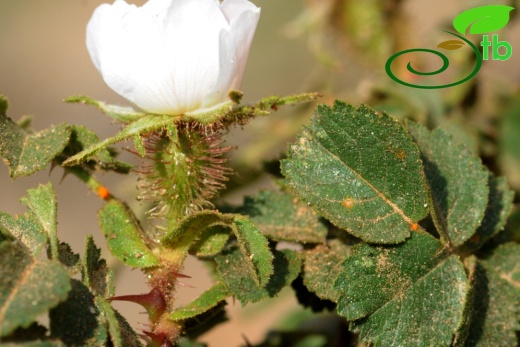Rosa turcica
Rosa turcica
Özgül
Syn: Rosa horrida
Differs from R. pulverulenta as follows: prickles coarse, strongly curved or hooked, much dilated at base, usually interspersed with glandular acicles or bristles; leaflets 5-7, elliptic to orbicular, 0,8-2 cm long, not sticky, glabrescent, glandular beneath but usually not so above; teeth 7-16 on each side, stipules rather narrow; flowers usually solitary; pedicels up to 1 cm, smooth or with sparse glandular acicles; sepals with rather large, glandular-serrate lobes, ± glandular on the back, reflexed and soon deciduous after anthesis; petals small and narrow, up to 1,5 cm long, white; styles usually glabrous or sparsely pubescent, stigma-head loose, ± globose to conoidal; disc wide, often conical, orifice very narrow; hypanthia 1-1,6 cm, glabrous or with a few acicles. Fl. 5-7. Open dry places, steppe, rocky slopes, grazed mountain meadows, open forests; often on limestone, 200-1700 m.
Balkans, S. Russia, Crimea, Caucasus, Soviet Armenia.





